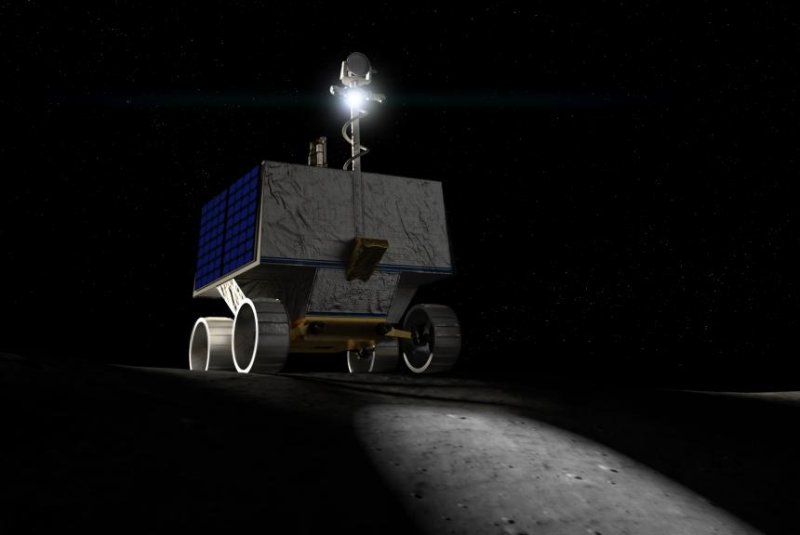NASA's VIPER rover will spend 100 days scanning and drilling for water on the moon's south pole. Photo by NASA Ames Research Center
Oct. 25 (UPI) -- Before the first woman and next man land on the moon, NASA will send another rover to the lunar surface, this time to the satellite's south pole.
The Volatiles Investigating Polar Exploration Rover, or VIPER, will be designed to hunt for water on the lunar south pole. Planetary scientists are confident there is water ice on both the moon's poles, perhaps in the millions of tons.
Still, scientists aren't certain about the exact whereabouts and nature of the moon's water reserves. VIPER could help NASA scientists develop more detailed resource maps as they prepare for send humans to the moon for the first time in decades.
"The key to living on the Moon is water -- the same as here on Earth," Daniel Andrews, the project manager of the VIPER mission and director of engineering at NASA's Ames Research Center in California, said in a news release. "Since the confirmation of lunar water-ice ten years ago, the question now is if the Moon could really contain the amount of resources we need to live off-world. This rover will help us answer the many questions we have about where the water is, and how much there is for us to use."
Under the Artemis program, NASA plans to send both robots and astronauts to the moon in an effort to establish a permanent lunar base -- an outpost that can support deep space travel. If NASA can locate accessible water on the moon, it could be used not only to drink and irrigate crops, but also to produce oxygen and fuel.
To find water, VIPER will scan the lunar surface using its Neutron Spectrometer System. When the system detects an area likely to host water, the golf cart-sized rover will deploy its drill, the Regolith and Ice Drill for Exploring New Terrain, or TRIDENT.
NASA plans to land VIPER on the moon in December 2022. The rover will spend 100 days collecting data, which scientists will use to create a water resource map.
"It's incredibly exciting to have a rover going to the new and unique environment of the South Pole to discover where exactly we can harvest that water," said Anthony Colaprete, VIPER's project scientist. "VIPER will tell us which locations have the highest concentrations and how deep below the surface to go to get access to water."















